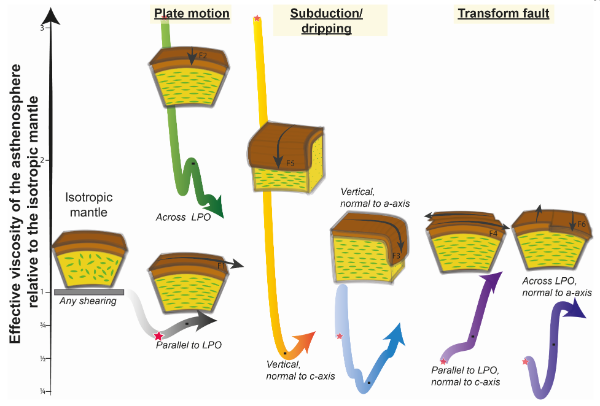Our understanding of mantle convection depends critically on computer models that simulate the rock deformation occurring within the mantle interior. Recently, this rock deformation has been shown to be anisotropic, meaning that deformation happens more easily in some directions compared to others, depending on textures that form within the rock.
Simple models have shown that this “anisotropic viscosity” should exert a first-order influence on a wide range of deformations occurring within the solid earth. Despite its importance, anisotropic viscosity has not yet been incorporated into numerical models of geodynamic processes.
This project seeks to address this deficiency in two ways:
- Incorporate 3D anisotropy into geodynamic models to understand how rock texture and viscosity anisotropy affect mantle deformation processes.
- Train machine-learning algorithms (using the modeling results) to predict anisotropic viscosity from seismic observations of anisotropy (e.g. for mid-ocean ridge regions).
Both steps represent important computational advances, which we will use to constrain the influence of anisotropic viscosity for geodynamic problems such as seafloor spreading and time-dependent plate motions.
Requirements
- MSc in physics, geology, or a related field.
- Candidates should have experience in programming and a good understanding of plate tectonics and mantle dynamics.
Supervisors
Professor Clinton Phillips Conrad
Call 1: Project start autumn 2021
This project is in call 1, starting autumn 2021. Read about how to apply
